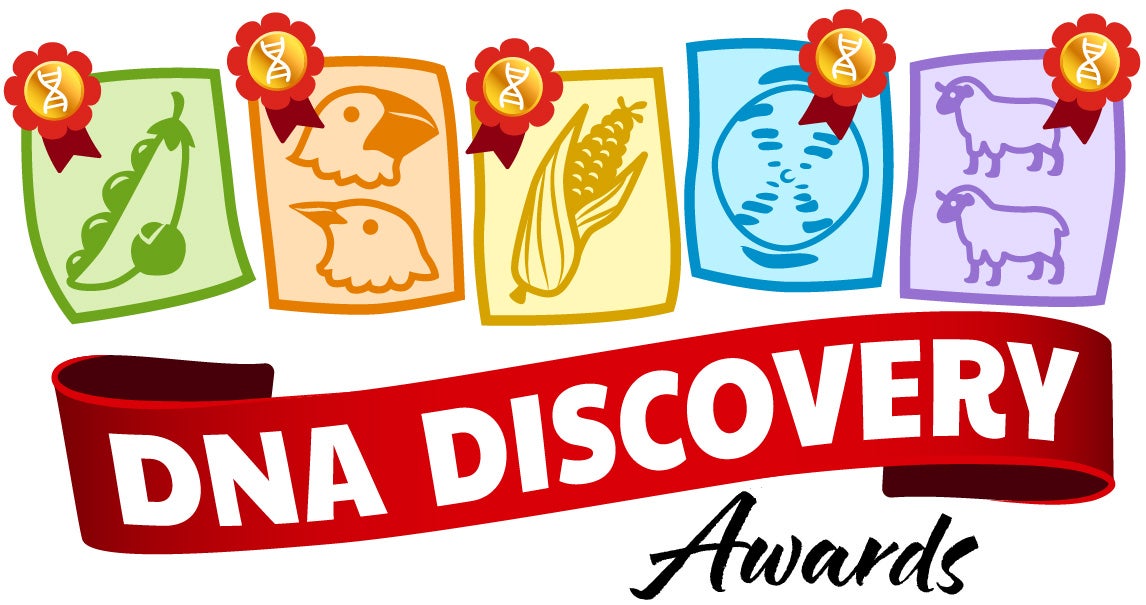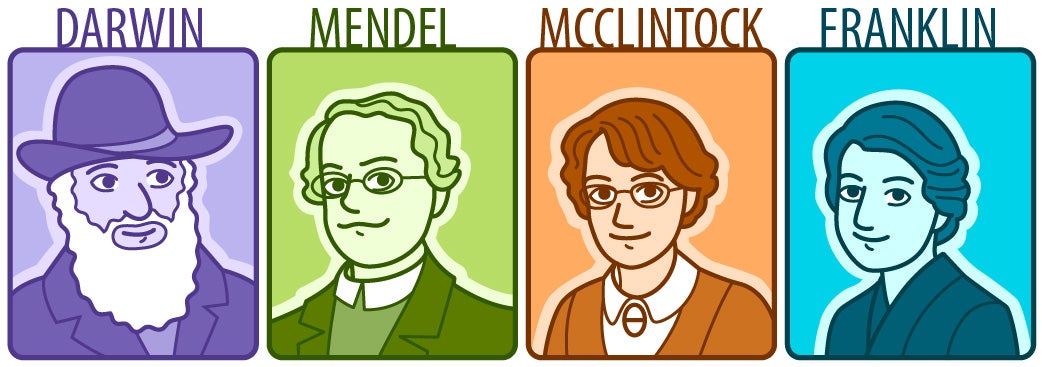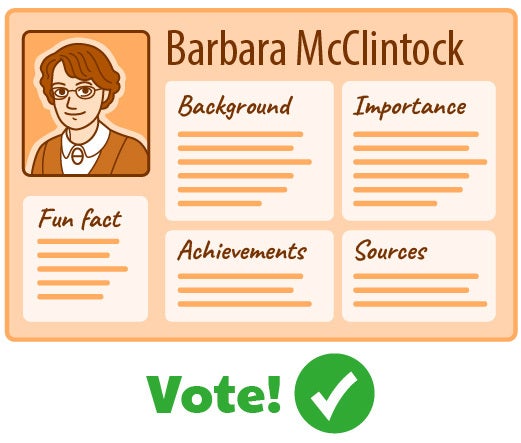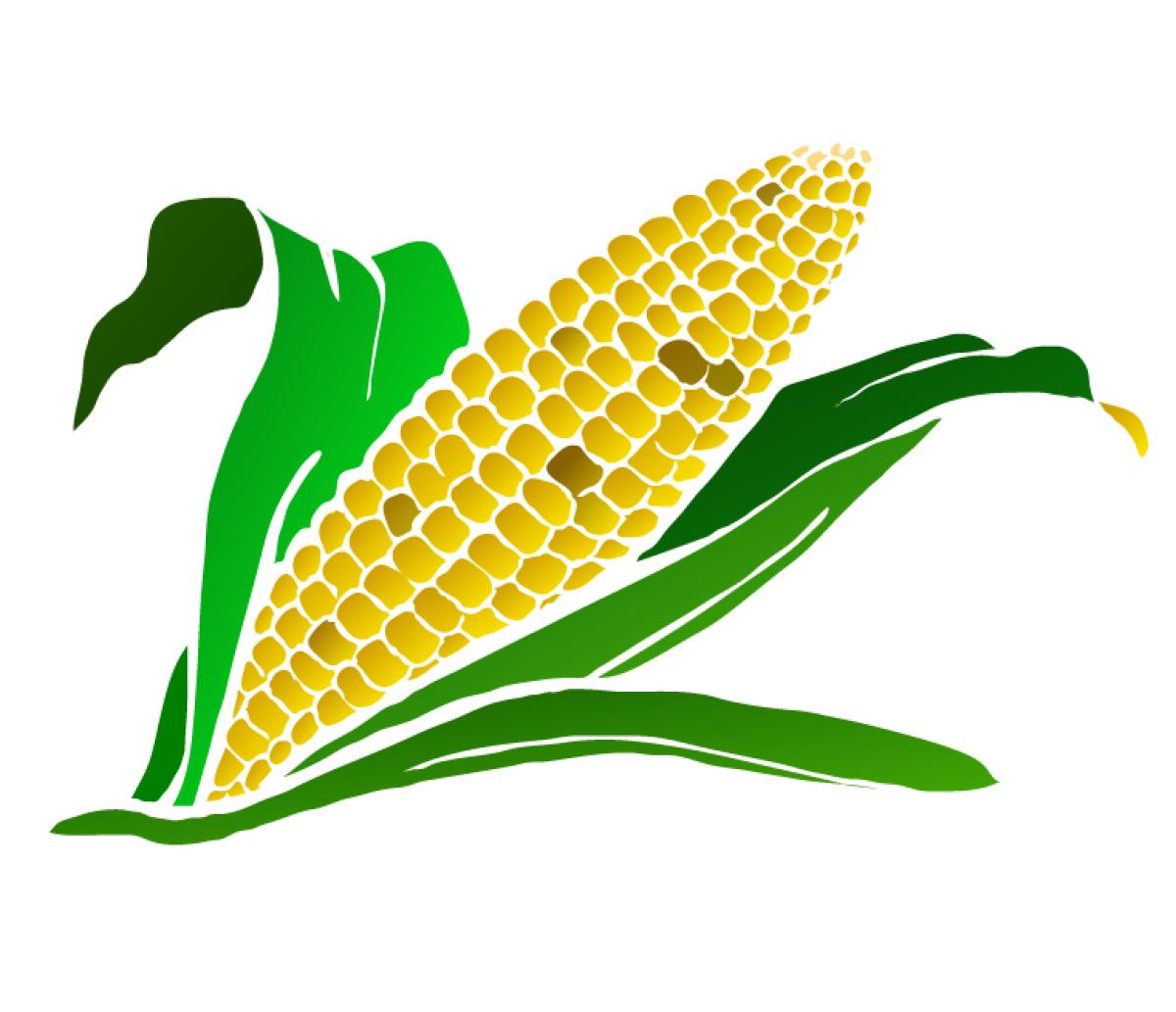
Illustrated by: Sabine Deviche
Learning About The History of DNA Research
Genetics–it's the study of inheritance and DNA. It’s what makes it possible for us to be here, and why we are similar in many ways to our relatives. We've learned so much about genetics over the past 200 years... How did the study of genetics get to where it is today? Even 40 years ago, saying you could figure out exactly what DNA a person has in their genome was a dream. Now it can be done by nearly any doctor, and for less than an Xbox costs!
This lesson will teach you about genetics and the scientists who have grown the field. You'll also learn about how science research builds on itself. A strong base of work is needed to build more detailed studies on top of.

It's for this reason that you are going to help us start an award show for the scientists that got us here... The DNA Discovery award! The award is given only to the most important scientists in genetics. The judges change every year though, and this year your class is set to vote on who is the winner. So it’s time to learn about the nominees and other scientists who allowed them to shine!
What You Need
- PowerPoint presentation (your teacher has this)
- Timeline items
- Access to a computer, library, or other way to look up information
- Pencils and colored pencils, markers, or crayons
- Access to a printer (optional)
Procedure
ENGAGE
1. Watch the genome sequencing video that your teacher plays for the class. While you watch, think about the following: Who studies science and makes discoveries? How is research done?
2. Discuss with your class. What did you learn from the discussion?
EXPLORE
3. Your teacher will pass out a list of discoveries in genetics. Work with your group to research when these events occurred and put them into a timeline. You can also find the list here.

EXPLAIN
4. Compare your timeline with another group’s. Do your timelines match?
5. With that new group, talk about the timeline items. Are there any surprising things on the list? Did anything happen earlier or later than you expected? What did you learn?
ELABORATE
6. Your teacher will explain the DNA Discovery award to you, and present the nominees. Pick a nominee from the list below and research them:
- a. Charles Darwin
- b. Rosalind Franklin
- c. Barbara McClintock
- d. Gregor Mendel

7. Research your chosen scientist, including
- a. Their background
- b. Key achievements
- c. Why that achievement is important
- d. A fun fact
- e. Why they should win the award
- f. Don't forget to note your sources
EXPLAIN
8. Create a poster with your findings using the supplies your teacher provides. Your teacher will instruct you if you should do it digitally or on paper.
- a. Click to view the rubric for your poster
- b. Click to view example poster here
9. Make a separate page with your sources. Make sure to follow your teacher’s instructions on how these should be formatted.
EVALUATE

10. Your teacher will provide a judging form and give you time to go around and look at your peers’ projects. Do your best to vote on who should win the DNA Discovery award, and who made the best poster.
When this activity was first designed, Emma Gerrard was a Barrett Honors undergraduate student at Arizona State University, where they were studying genetics. They designed the activity as part of their student thesis.
Illustration of maize by Clker-Free-Vector-Images via Pixabay.
Read more about: DNA Discovery Awards
Bibliographic details:
- Article: DNA Discovery Awards
- Author(s): Emma Gerrard
- Publisher: Arizona State University School of Life Sciences Ask A Biologist
- Site name: ASU - Ask A Biologist
- Date published: 28 Mar, 2025
- Date accessed:
- Link: https://askabiologist.asu.edu/experiments/DNA-Discovery-Awards
APA Style
Emma Gerrard. (Fri, 03/28/2025 - 11:02). DNA Discovery Awards. ASU - Ask A Biologist. Retrieved from https://askabiologist.asu.edu/experiments/DNA-Discovery-Awards
Chicago Manual of Style
Emma Gerrard. "DNA Discovery Awards". ASU - Ask A Biologist. 28 Mar 2025. https://askabiologist.asu.edu/experiments/DNA-Discovery-Awards
Emma Gerrard. "DNA Discovery Awards". ASU - Ask A Biologist. 28 Mar 2025. ASU - Ask A Biologist, Web. https://askabiologist.asu.edu/experiments/DNA-Discovery-Awards
MLA 2017 Style

Within the field of genetics research, many advancements you may not know about have helped move our understandings forward in leaps and bounds. Let's dive in to learn about some of the researchers who helped build the genetic knowledge we use today in research, medicine, and beyond.
Be Part of
Ask A Biologist
By volunteering, or simply sending us feedback on the site. Scientists, teachers, writers, illustrators, and translators are all important to the program. If you are interested in helping with the website we have a Volunteers page to get the process started.
